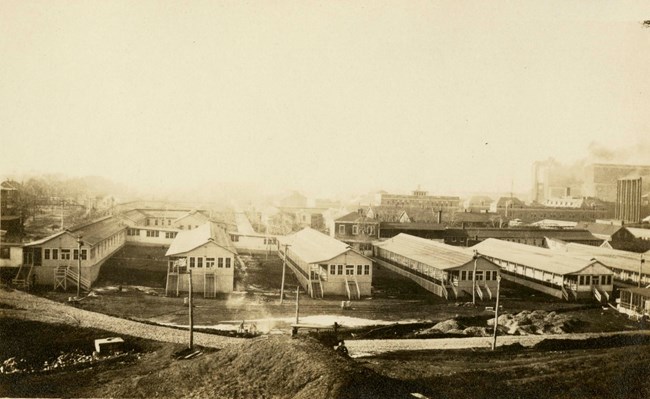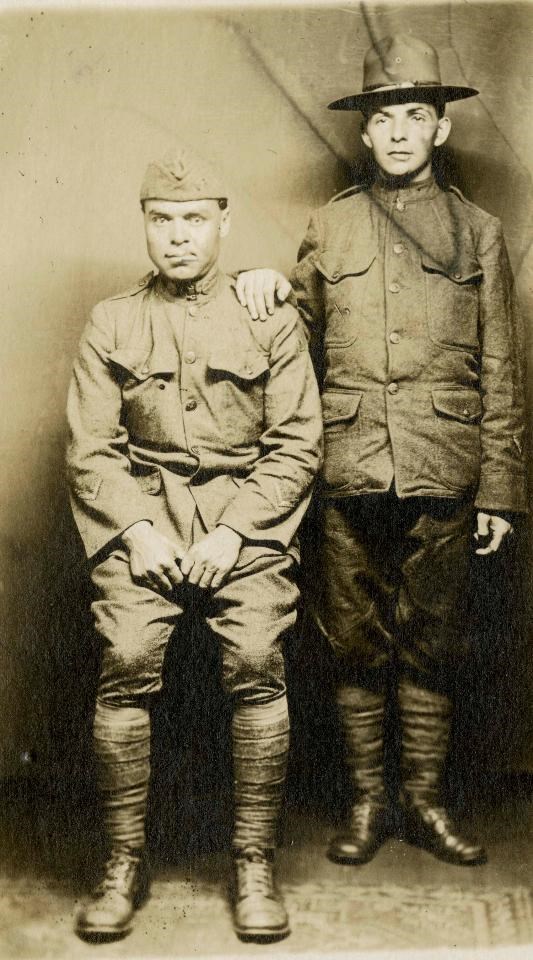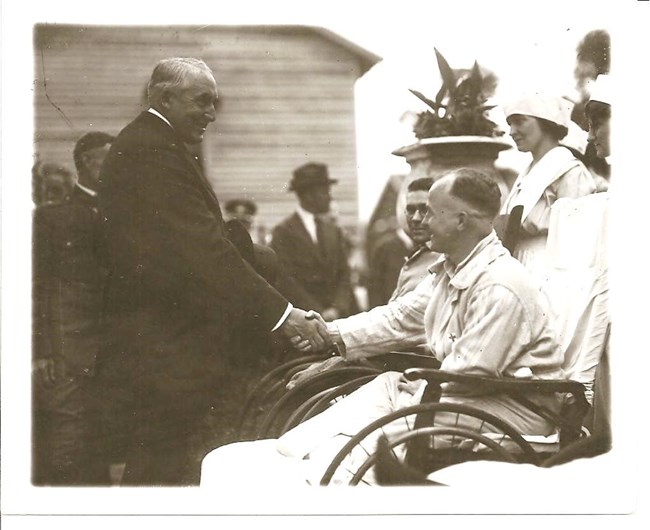
NPS U.S. Army General Hospital No. 2Fort McHenry’s most active time period in its long and varied history was not the War of 1812, but during the First World War. 
NPS Construction and Staffing

NPS Surgical Center
Occupational Therapy
Nationwide Flu EpidemicWomen played a major role in the military during the First World War. Nurses, dressed in their starched white uniforms and caps, were employed by the Army. Employing their skills and caring ways, they played an important role in helping thousands of their soldier-patients on the road to a speedy recovery. 
NPS Presidential VisitOn June 14, 1922, the patients and hospital personnel were treated with a visit by their Commander-in-Chief, President Warren G. Harding. He was at the Fort on this special Flag Day to dedicate the newly erected statue of Orpheus, a memorial to Francis Scott Key and the defenders of Baltimore in 1814. The statue can be seen at the park today. The Hospital ClosesThe last of the patients of General Hospital No. 2 were released in 1923. For the first time in six years, not one soldier was in Fort McHenry for medical treatment. The War Department would make the Fort a National Park in 1925 and tear down the empty, decaying hospital buildings two years later. The old brick Star Fort and its silent cannon were all that remained of the 125 years of military occupation. A new phase in the life of the old fort was about to begin – that of national park. |
Last updated: November 16, 2020
